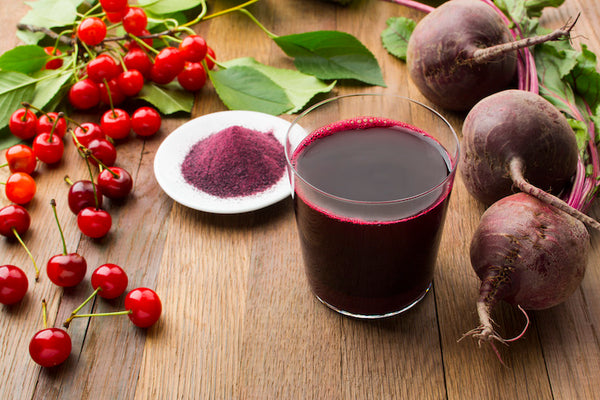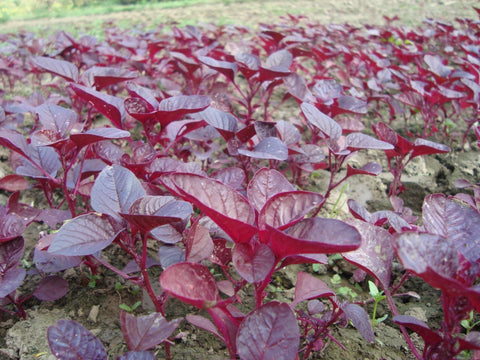10 Stamina Tips for Endurance Runners
Endurance runners need to increase stamina so they can run faster and further but often don’t maximize this potential. Stamina as a goal starts day one and continues as each milestone becomes easier to reach. The strategy for building endurance requires careful planning and adherence to a plan. The top strategies for endurance runners to build stamina are a combination of habits, practice, chemistry, and physics.
10 stamina building tips for endurance runners
1 - Build up mileage slow and steady

When building a tailored running plan, a big consideration to make is the pace at which you advance. Running too fast, too soon can tire you out, use unnecessary excessive oxygen and make for a flat run. There are many reasons to run slow and steady for building up endurance: It helps develop key running muscles in the legs; core, and arms; helps to slowly warm up and adapt tendons, joints, ligaments, and bones to the impact of running; and slower running movements help the body adapt a better, more efficient running form and condition the cardiovascular and respiratory systems to work more effectively. When endurance runners take the time to build momentum, it helps to mentally work through the discomfort required to go to your next best level. Ultimately, building up your pace improves glycogen storage and oxygen conservation.
2 - Prioritize long, slow runs

It’s important when building endurance to prioritize longer runs, even when that means going slower. Tacking on an additional 15 minutes or an additional mile helps the body adjust to the discomfort of the push. The reward is the next time that same distance or time is clocked, it feels more natural, and then it’s time for another push. When faster times are the priority, it’s difficult to finish strong and improve endurance. It’s better to run slower and cover more distance at first. Then, once distance goals are accomplished, timing can be improved.
3 - Breathe in through your nose
By default, many athletes and endurance runners breathe through their mouths. But studies have shown that nose inhaling increases nitric oxide which improves stamina and performance. Not only does nasal inhaling help maintain your pace, but it also activates the parasympathetic nervous system for a more relaxing run. At the same time, mouth breathing has proven to be, causing athletes to contract exercise-induced Bronchoconstriction, commonly known as asthma. Modern wisdom for endurance runners is to train yourself into adopting a nasal breathing habit.
4 - Add HIIT to your program
Dedicate 15% of your weekly workout plan to HIIT (High Intensity Interval Training) IT makes those slow, steady runs more impactful and helps build lung capacity and tolerance. Whether it be interval sprints or any other HIIT training sequence, it’s important to mix in and get about 2 sessions of HIIT per week. The simplest way to do HIIT on non-running days is to do 60 seconds on/off with sprints, resting between high-intensity sets. It speeds up the endurance-building process, increases oxygen volume capacity, and keeps the body from becoming exercise complacent.
5 - Use red spinach (amaranthus) for nitrate loading on run days

Boost with red spinach on or before runs. Endurance runners need nitrate supplementation to increase stamina and lower oxygen needs. Red spinach is packed with nitrate, even more so than beetroot. Many studies have found that the nitrate levels in amaranth enhance muscle efficiency, fatigue resistance, and performance, providing increased energy levels. The amount to consume for high athletic performance is 400 mg, according to the same study.
6 - Drink Beet juice every day to support nitric oxide levels

Daily nitrate support with beet juice helps maintain nitric oxide levels. Beet powder delivers proven results, especially when combined with anthocyanin from tart cherries for running inflammation and muscle recovery. The combination helps the body rid itself of unwanted chemicals while boosting energy and physical movement. Overall, beet juice helps runners
- Increases time-to-exhaustion rates
- Improves efficiency and running endurance
- Should be taken within 90 min before a run
- Peak value of nitrate occurs within 2–3 hours after ingestion
- 400 mg of nitrate is recommended for run days
7 - Eat a nitrate-rich, endurance runner diet

Evidence-based research supports dietary nitrate from a plant-based diet as a method for enhanced sports and exercise performance. Inorganic nitrate is abundantly found in beets, red spinach, and dark leafy green vegetables. This means prioritizing a nitrate-rich plant diet for daily nitric oxide boosting is essential for endurance runners. Eating for endurance means eating foods that reduce oxygen costs for exercise - improving exercise tolerance. One study showed the impact of a nitrate-rich diet on athletes:
- Improved endurance
- Accelerated recovery rates
- Improved oxygen conservation
- May support healthy circulation
- Increased antioxidant capacity
- More efficient glycogen storage
8 - Develop a strong mindset to persevere
Building endurance is also directly related to smiling. Often, that determining factor is the mindset we’ve developed. One study showed that smiling while running can give your brain that extra push to keep going. In fact, the study showed that runners who smiled:
- used less oxygen
- ran more economically
- had a lower perceived rate of exertion than those who frowned
The reason for this difference has to do with facial feedback. Our brain associates smiling with states of enjoyment or happiness that are more relaxed. So when smiling during a run, we are intentionally trying to relax - which brings on a positive mentality and helps increase endurance. Running is as much a mental game as it is a physical one.
9 - Recover correctly
One study examined the impact of tart cherry juice on runners who participated in Oregon’s Hood to Coast 197-mile race Relay Race. One group of runners consumed tart cherry juice for one week before the race, and the other group consumed a placebo. The tart cherry runners reported less pain and faster recovery times than their placebo counterparts. Many studies show that tart cherry juice gives endurance runners a serious edge in speedier recovery times and reduced inflammation after a run.
In addition to tart cherry juice for recovery, the best way to prepare for the next run is to recover with a recovery checklist:
- Have a pre-workout that contains beets and tart cherry
- Hydrate and drink enough water to replenish
- Drink tart cherry juice
- Cooldown
- Stretch thoroughly
- Get routine sports massages
- Rest
- Get a good night’s sleep
10 - Be consistent - with food, supplements, and your workout calendar
Consistency is key for building endurance. Without a plan, it’s too easy to slip off schedule. It’s not just committing to run days and HIIT days; it’s consistency with eating nitrate-rich foods, nitric oxide boosting supplements, and keeping the right mindset to achieve running goals.
Leveraging these tools to maintain consistency:
- Get a coach
- Keep a log
- Schedule runs and HIIT sessions
- Enter a race
- Run early in the day
- Drink beet and tart cherry juice daily
- High nitrate, plant-based meals
- Join a running group for support and accountability
- Track hydration
- Change training route for a variety
Endurance running is a labor of love and patience. Leveraging these stamina tips can get runners of every level on the path to self victory.
Resources
Dallam, George & Kies, Bethany. (2020). The Effect of Nasal Breathing Versus Oral and Oronasal Breathing During Exercise: A Review. Journal of Sports Research. 7. 10.18488/journal.90.2020.71.1.10.
Jones A. M. (2014). Dietary nitrate supplementation and exercise performance. Sports medicine (Auckland, N.Z.), 44 Suppl 1(Suppl 1), S35–S45. https://doi.org/10.1007/s40279-014-0149-y
Barnard, N.D.; Goldman, D.M.; Loomis, J.F.; Kahleova, H.; Levin, S.M.; Neabore, S.; Batts, T.C. Plant-Based Diets for Cardiovascular Safety and Performance in Endurance Sports. Nutrients 2019, 11, 130. https://doi.org/10.3390/nu11010130
Beetroot juice and exercise: pharmacodynamic and dose-response relationships. Lee J. Wylie, James Kelly, Stephen J. Bailey, Jamie R. Blackwell, Philip F. Skiba, Paul G. Winyard, Asker E. Jeukendrup, Anni Vanhatalo, and Andrew M. Jones. Journal of Applied Physiology 2013115:3, 325-336
Thompson C, Wylie LJ, Fulford J, Kelly J, Black MI, McDonagh ST, Jeukendrup AE, Vanhatalo A, Jones AM. Dietary nitrate improves sprint performance and cognitive function during prolonged intermittent exercise. Eur J Appl Physiol. 2015 Sep;115(9):1825-34. doi: 10.1007/s00421-015-3166-0. Epub 2015 Apr 7. PMID: 25846114.
Domínguez R, Cuenca E, Maté-Muñoz JL, et al. Effects of Beetroot Juice Supplementation on Cardiorespiratory Endurance in Athletes. A Systematic Review. Nutrients. 2017;9(1):43. Published 2017 Jan 6. doi:10.3390/nu9010043
University of Exeter. (2009, August 7). Beetroot Juice Boosts Stamina, New Study Shows. ScienceDaily. Retrieved March 30, 2021 from www.sciencedaily.com/releases/2009/08/090806141520.htm
Kerry Kuehl, M.D., OHSU School of Medicine. Tart Cherry Juice Reduces Muscle Pain and Inflammation. https://news.ohsu.edu/2010/07/07/tart-cherry-juice-reduces-muscle-pain-and-inflammation
Noel E. Brick, Megan J. McElhinney, Richard S. Metcalfe. The effects of facial expression and relaxation cues on movement economy, physiological, and perceptual responses during running. Psychology of Sport and Exercise. Volume 34, 2018, Pages 20-28, ISSN 1469-0292. https://doi.org/10.1016/j.psychsport.2017.09.009.





Comments (0)
There are no comments for this article. Be the first one to leave a message!